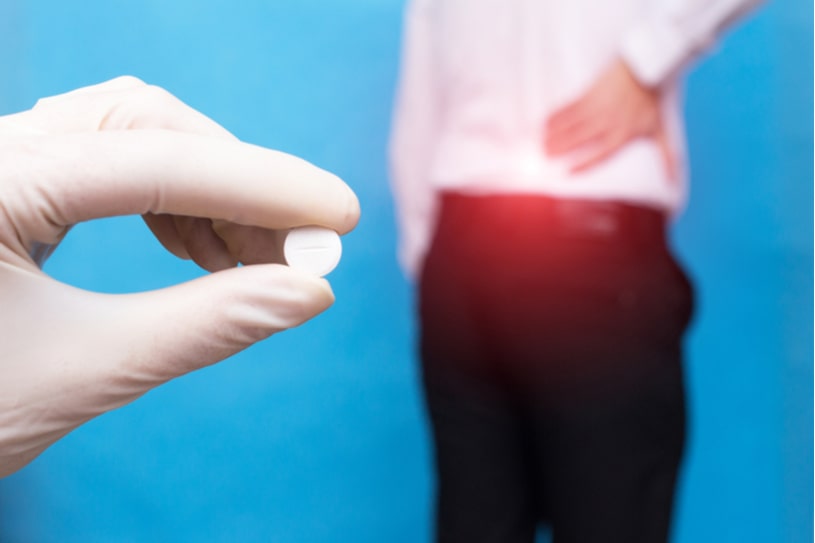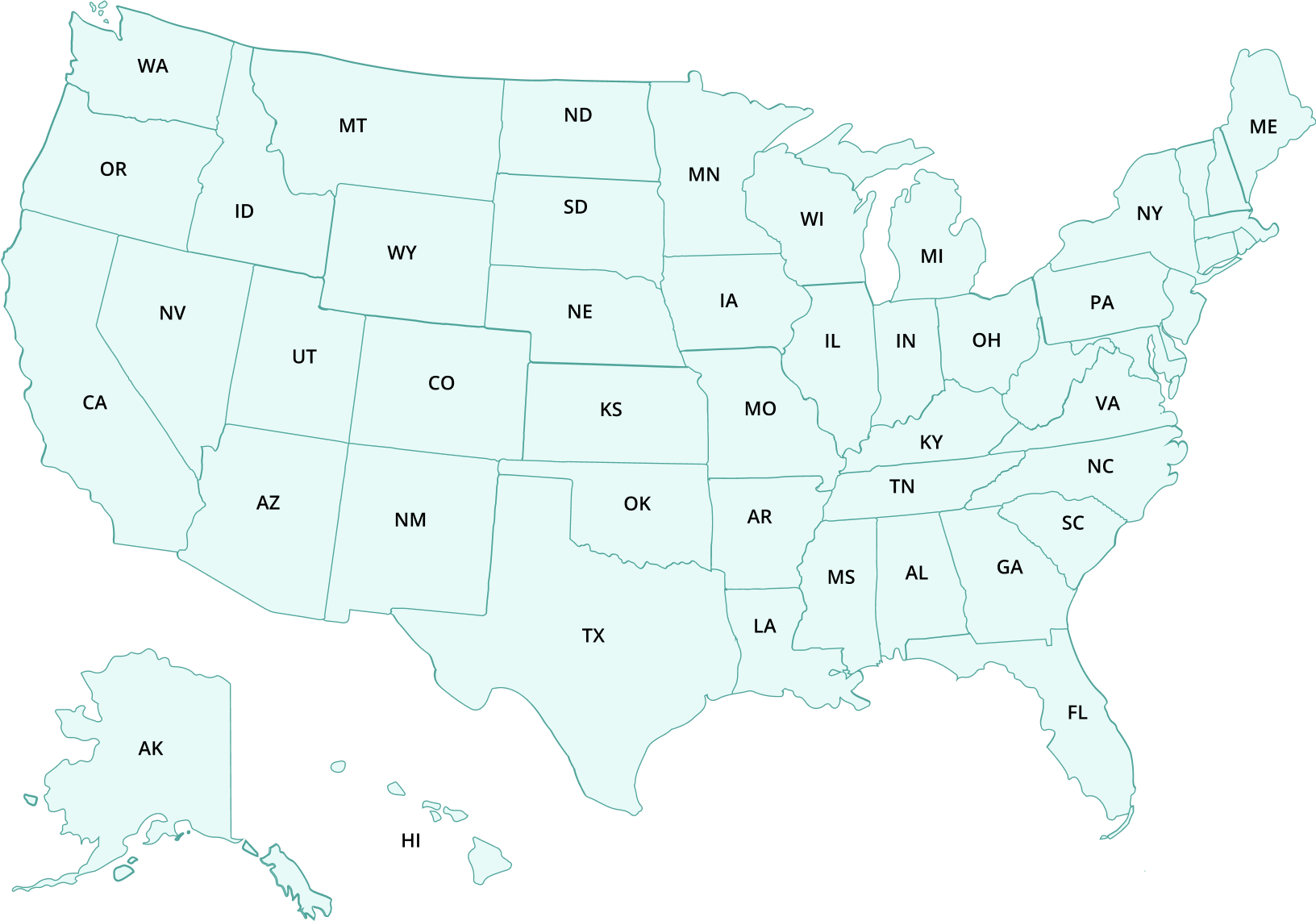Muscle relaxers are medications used for the treatment of acute to chronic pain. Usually, the over-the-counter muscle relaxants are used for the former and the prescription muscle relaxers ones are used for the latter. The use of these medications is relatively widespread in the general population. Based on a survey from the US National Center for Health Statistics, around 2 million American adults use muscle relaxant pills. Many individuals who responded to this survey also used an additional analgesic to enhance the efficacy of the drugs used to relieve spasms and pain.
Table Of Contents:
However, interaction of muscle relaxants should also be considered. Even though effective results can be experienced with the many uses of muscle relaxers drugs, there is a possibility of developing dependency and addiction.
In this article, information about the types of muscle relaxers, names of muscle relaxers, signs and symptoms of addiction, who are most at risk of muscle relaxers addiction, and how to treat this addiction will be provided.
Hope Without Commitment
Find the best treatment options. Call our free and confidential helpline
Most private insurances accepted
More About Muscle Relaxants:
What Are Muscle Relaxers?
A muscle relaxant medicine contains specific compounds that can interact with two different systems of the human body. But, what are muscle relaxers and how do they work? The general mechanism of action of muscle relaxant drugs is blocking the transmission at the neuromuscular junction thereby decreasing skeletal muscle tone. These medications can act peripherally, as well as centrally, in the body. The result is a reduction in the level of pain that the patient experiences due to the presence of cramps and spasms.
Furthermore, these drugs can be used to assist in the treatment of numerous conditions that tend to affect the body’s nervous system. Some potential conditions that may lead to similar symptoms include cerebral palsy, motor neuron disease, and multiple sclerosis.
Are Muscle Relaxers Controlled Substances?
Some patients may wonder, are muscle relaxers controlled substances? There are many muscle relaxers in the pharmaceutical industry and some, especially the prescription ones, are controlled substances while others are not.
Some of the common muscle relaxers belonging to the Controlled Substances Act of 1970 include the following:
There are many names of muscle relaxers and one of the most commonly used prescription muscle relaxant drugs is Flexeril but this drug is not considered a controlled substance. In a study by a pathologist from Vancouver, this pain medication has an amazing safety profile. However, at higher doses, this could cause overdose on muscle relaxers but not as toxic as other tricyclic psychotherapeutic agents.

Types of Muscle Relaxers
The names of muscle relaxers are grouped into two types: antispasmodics and antispastics. The former medications can reduce spasms via the CNS while the latter drugs affect the spinal cord to improve tightness and spasms. Additionally, when it comes to looking at the types of muscle relaxers on the market, it is important to note that some of the muscle relaxer pills work specifically to reduce spasms, as well as cramps, while other medicines are used for this purpose off-label. This means some drugs are not meant to treat these conditions specifically but may yield effective results. Furthermore, some types of muscle relaxers that are available on the market tend to be more effective than others, but the side-effect profile and, of course, the possibility of causing a dependency, should always be factors taken into account.
Antispasmodics
In a study from the Japanese Journal of Pharmacology, under the group of anticholinergics, antispasmodics block the action of the chemical acetylcholine as this chemical substance can cause contractions, cramps, and spasms. Generally, antispasmodics are drugs that act centrally to assist in alleviating the spasms and pain that a patient is experiencing and the majority of people who are provided with antispasmodics should take these medicines for up to three weeks.
Some of the common muscle relaxers under the antispasmodic group include the following:
- Carisoprodol
- Chlorzoxazone
- Cyclobenzaprine
- Metaxalone
- Methocarbamol
- Orphenadrine
- Tizanidine
Take note that a daily dose of the substance prescribed will depend on a patient’s condition and taking two of these drugs at a time, as well as combining them with off-label options will raise the chance of muscle relaxers side effects appearing rather than double their healing properties.
Antispastics
When there is spasticity, there is a stiffening. Eventually, this health condition prevents the proper flow of fluid in the body. To address this issue, antispastics are used. These drugs reduce the release of excitatory neurotransmitters to provide instant relief to spasticity.
Some of the common muscle relaxers under the antispastic group include the following:
OTC ones can also be used by patients when they are not able to obtain a prescription from a physician. These are not as strong as options that a person gets with a prescription but may still provide adequate relief to some people. In some cases, natural muscle relaxants may be used as well.
OTC ones can also be used by patients when they are not able to obtain a prescription from a physician.
Muscle Relaxers Addiction And Abuse Overview
Muscle relaxer pills are widely used by the general population, often to assist in providing treatment for injuries and conditions that cause spasms, cramps, and other issues. But the question is, are muscle relaxers addictive? The problem is that many do not realize that some of the agents used in the manufacturing of these drugs do have addictive potential. Not all of them cause addiction, but people must understand which ones they need to be wary of.
In 2011, there were 53,000 emergency department visits in the United States due to muscle relaxers abuse. In this report, carisoprodol was the most commonly abused, with a total of 25,528 cases. This is followed by cyclobenzaprine with total cases of 11,551. Furthermore, 18% of all total cases involved the consumption of alcohol.
Individuals who become addicted have further risks to be considered when mixing these medicines with other substances. For example, abuse also means combining muscle relaxers and alcohol can lead to serious adverse events. Take note that these drugs stay in the system for up to 48 hours. Thus, when combined with alcohol, the severity of side effects can increase, including respiratory depression and coma.
Muscle Relaxers Addiction Signs And Symptoms
Based on a study of pharmacologists from Texas, there is a potential for muscle relaxers abuse and addiction. Prolonged use of these drugs can cause dependence, especially on Soma and Flexeril. Thus, patients using these medications should learn the signs and symptoms of muscle relaxers addiction so that in case help is needed, relatives and loved ones know what to do and who to contact.
Some of the physical signs and symptoms of muscle relaxers addiction and abuse include the following:
- Seizures
- Extreme sedation
- Fatigue and weakness
- Dry mouth
- Decreased blood pressure
According to the Drug Enforcement Administration, in 2010, there were around 12,411 emergency visits due to muscle relaxers abuse, specifically, Flexeril.
Some of the psychological signs of muscle relaxers abuse and addiction that are associated with medication include the following:
- Hallucinations
- Confusion
- Depression
There are other signs visible to people addicted to these drugs and these can be observed through their actions such as taking the drugs more than the prescribed length, faking pain to get a prescription, and making excuses to get an early refill. In case these signs and symptoms are observed, considering resources like a rehab center for a successful recovery would be of great help.
Who Is Most at Risk of Addiction to Antispasmodics and Antispastics
Always remember that anyone who is using these drugs is prone to abuse these drugs. However, there are other groups of individuals who are at a higher risk. According to researchers from Pennsylvania, females are most frequently prescribed these drugs. This is followed by patients of ages 45-64 years. In this report, these groups were also identified as those who are at a higher risk of abusing these drugs, especially those who are using opioids.
Treating Muscle Relaxers Addiction
Indeed, muscle relaxers including natural, OTC, and prescription ones are effective medications for the treatment of different pain conditions. They are classified into two types namely antispasmodics and antispastics. However, although useful medications, abusing them can lead to dependence, addiction, and withdrawal.
The fact that withdrawal symptoms may occur when a person becomes addicted to muscle relaxers pills and suddenly stops using them, tapering off the drug is often advised. When muscle relaxers addiction has developed, it would be a good idea for a person to undergo a detox period or contact a professional for a safer recovery. This can help with the management of withdrawal symptoms and remove these drugs from the system.
The programs at a rehab center can be utilized. Additionally, there are inpatient rehab centers and outpatient rehab centers. In this case, the person will be closely monitored. Professional medical treatment would be made available to the individual to assist not only with the withdrawal stage but also the remainder of the period during which the person needs to recover from their addiction and abuse successfully.
Frequently Asked Questions
Are Muscle Relaxers Narcotics?
These drugs are not narcotics. Although they can help reduce and manage pain conditions, they work differently from narcotics.
Are Muscle Relaxers Safe?
These drugs are generally safe when used properly. There are even OTC ones as their safety profile is amazing. However, muscle relaxers abuse and misuse can cause dangerous side effects to health
Can You Get Addicted to Muscle Relaxers?
Yes, one can get addicted to these drugs. Taking these drugs without a prescription, abusing them, or using them for a long period can increase the risk of addiction.
How Do Muscle Relaxers Make You Feel?
Generally, muscle relaxant drugs induce sleepiness to make you feel calm. These drugs slow down the functions of the CNS, thereby producing depressant effects.
Find Drug Rehabilitation Centers Near You Anywhere In the US
Addiction Resource team has compiled an extensive list of the top drug rehabilitation facilities around the country. Click on the state you are interested in, and you'll get a list of the best centers in the area, along with their levels of care, working hours, and contact information. Haven't found the rehab you need? Call the toll-free helpline below for professional assistance.

- Alabama
- Alaska
- Arizona
- Arkansas
- California
- Colorado
- Connecticut
- Delaware
- Florida
- Georgia
- Hawaii
- Idaho
- Illinois
- Indiana
- Iowa
- Kansas
- Kentucky
- Louisiana
- Maine
- Maryland
- Massachusetts
- Michigan
- Minnesota
- Mississippi
- Missouri
- Montana
- Nebraska
- Nevada
- New Hampshire
- New Jersey
- New Mexico
- New York
- North Carolina
- North Dakota
- Ohio
- Oklahoma
- Oregon
- Pennsylvania
- Rhode Island
- South Carolina
- South Dakota
- Tennessee
- Texas
- Utah
- Vermont
- Virginia
- Washington
- West Virginia
- Wisconsin
- Wyoming
Page Sources
- Cimolai, N. (2009). Cyclobenzaprine: a new look at an old pharmacological agent. Expert review of clinical pharmacology, 2(3), 255-263.
- Davidoff, R. A. (1985). Antispasticity drugs: mechanisms of action. Annals of Neurology: Official Journal of the American Neurological Association and the Child Neurology Society, 17(2), 107-116.
- Dillon, C., Paulose-Ram, R., Hirsch, R., & Gu, Q. (2004). Skeletal muscle relaxant use in the United States: data from the Third National Health and Nutrition Examination Survey (NHANES III). Spine, 29(8), 892-896.
- Gonzalez, L. A., Gatch, M. B., Forster, M. J., & Dillon, G. H. (2009). Abuse potential of Soma®: the GABAA receptor as a target. Molecular and cellular pharmacology, 1(4), 180.
- Soprano, S. E., Hennessy, S., Bilker, W. B., & Leonard, C. E. (2020). Assessment of physician prescribing of muscle relaxants in the United States, 2005-2016. JAMA network open, 3(6), e207664-e207664.
- Uruno, T., Shirane, M., Wada, K. I., Tsunematsu, R., Nagahamaya, K., Matsuoka, Y., ... & Kubota, K. (1992). Possible mechanisms of action of the antispasmodic agent tiropramide in the isolated detrusor from rats. The Japanese Journal of Pharmacology, 60(3), 275-280.
- Witenko, C., Moorman-Li, R., Motycka, C., Duane, K., Hincapie-Castillo, J., Leonard, P., & Valaer, C. (2014). Considerations for the appropriate use of skeletal muscle relaxants for the management of acute low back pain. Pharmacy and therapeutics, 39(6), 427.

 Authored by
Authored by  Reviewed by
Reviewed by 
